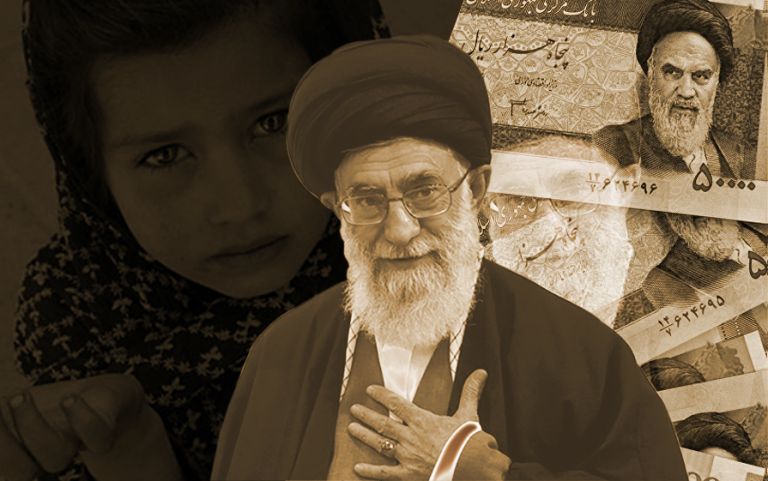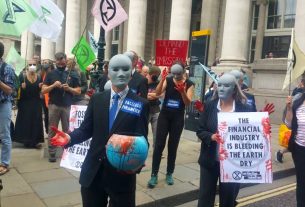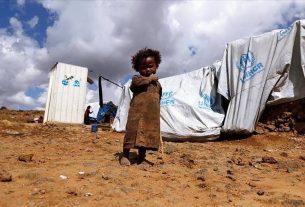Sun 23 June 2019:
Iran’s ruler, Ayatollah Ali Khamenei, may be one of the richest people on Earth, if not the richest, and his vast financial empire is designed to bypass the financial pressure of U.S. sanctions.
Khamenei leads Setad Ejraiye Farmane Hazrate Emam, or Executive Headquarters of Imam’s Directive; a secretive financial enterprise with holdings that were estimated to be at $95 billion in 2013. If true, Setad would have accounted for nearly a fifth of Iran’s total GDP, which was $467 billion at this time. Though little has been written about Setad, it plays a critical role in propping up Khamenei’s regime financially. Both the regime-owned Setad and the vast network of International Revolutionary Guard Corps (IRGC) businesses form a massive portion of Iran’s economy: both of them answer directly to Khamenei.
As U.S. sanctions continue to bite into Iran’s economy, it is worth understanding the role Setad has in extending and solidifying the reach Khamenei has over Iran. More broadly, Khamenei’s financial power mirrors other authoritarians, who operate murky financial empires and funnel state money into clandestine entities they personally control.
The Setad and Khamenei’s Rule
A groundbreaking 2013 Reuters investigation provided an exhaustive account of Setad’s internal structure and revenues. Seven years on from its initial publication, the piece may be even more relevant today as crippling U.S. sanctions contract Iran’s economy. According to the report, “The organization’s total worth is difficult to pinpoint because of the secrecy of its accounts. But Setad’s holdings of real estate, corporate stakes and other assets total about $95 billion.” “The organization’s total worth is difficult to pinpoint because of the secrecy of its accounts. But Setad’s holdings of real estate, corporate stakes and other assets total about $95 billion.”
“Just one person controls that economic empire – Khamenei. As Iran’s top cleric, he has the final say on all governmental matters,” the report adds. Setad was established by Iran’s former ruler Ayatollah Khomeini shortly before his death, and it was originally intended to be a temporary organization channeling funds into charities. Though Iranian propaganda tout Setad’s charitable services, it has morphed into an arm of Khamenei’s regime, funneling billions from Iran’s economy in order to bankroll the regime’s bureaucracy.
Though Iranian propaganda tout Setad’s charitable services, it has morphed into an arm of Khamenei’s regime, funneling billions from Iran’s economy in order to bankroll the regime’s bureaucracy. The Reuters investigation found Setad to have “built its empire on the systematic seizure of thousands of properties belonging to ordinary Iranians: members of religious minorities like Vahdat-e-Hagh, who is Baha’i, as well as Shi’ite Muslims, business people and Iranians living abroad.”
Setad’s vast revenues are mostly derived from three means: vacuuming up properties throughout Iran, investing in for-profit companies and buying minority stakes in charity organizations. Additionally, Iranians report being extorted by Setad representatives. According to the report, Setad sent employees to property owners, who demanded annual protection fees worth between 2 and 2.5 percent of the property’s total value. In one instance, an Iranian Shi’ite Muslim businessman wanted to sell a piece of his land, but local authorities required him to obtain a “no objection letter” from Setad. Authorities told him that because Setad has “protected” the land from squatters for decades, he needed to pay a fee to the organization.
Confused, the businessman refused but his lawyer recommended him to acquiesce. He was forced to pay $50,000. “No supervisory organization can question its property,” Naghi Mahmoudi, an Iranian lawyer who left Iran in 2010 and now lives in Germany, told Reuters investigators. Setad, as a direct arm of Khamenei, cannot be effectively monitored or checked by Iran’s parliament or president. Moreover, Setad’s strategy of owning less than 50 percent stakes in companies saved it from facing the full brunt of U.S. sanctions, which have been targeted against principal Iranians investors and organizations.
Authoritarian Governance and Wealth
If Khamenei’s Setad organization controls around $95 billion, Khamenei can make a good case that he’s the richest person on Earth, beating Amazon CEO Jeff Bezos, Microsoft CEO Bill Gates and investor Warren Buffet. But the way authoritarian strongmen build their financial empires make them difficult to calculate. Drenched in murky details and opaque layers of grey market bureaucracy, authoritarians often hold onto billions even while their countries suffer acute economic deprivation.
Yemen’s former dictator, Ali Abdullah Saleh, was thought to have been worth about $64 billion before he was killed during the Yemeni civil war in 2017. Yemen itself is one of the world’s poorest countries with a GDP of $26.8 billion in 2017. If Saleh did indeed control $64 billion, his personal net worth would have been 2.3 times what his entire country’s economic activity was worth. Yemen’s former dictator, Ali Abdullah Saleh, was thought to have been worth about $64 billion before he was killed during the Yemeni civil war in 2017. Saleh embezzled billions from Yemeni state funds and fuel subsidy programs and hoarded the wealth in an array of offshore accounts.
Russian President Vladimir Putin has also been estimated to hold vast piles of dark money, with a worth ranging wildly from $70 billion to $200 billion. If the latter number is correct, Putin would be one of the richest people to have ever lived. The scope of Putin’s financial empire is known only to a few people, but a bulk of his money comes from his tight relationship with Russia’s ruling oligarchs, who collectively control the lion’s share of Russia’s economy. The ruling family of Saudi Arabia, the Sauds, market themselves to be worth “well over” $1.4 trillion, according to an official website. Many of the Saudi royal family’s assets have been gained by having near-exclusive control of the Saudi state and economy via tax collection and profiteering from the state-owned oil enterprise, which is considered the most valuable company on Earth.
The ruling family of Saudi Arabia, the Sauds, market themselves to be worth “well over” $1.4 trillion, according to an official website. Saudi’s crown prince Mohammed bin Salman has made it a point to conspicuously consume luxury items. He owns a modern replica of Louis XIV’s famously opulent chateau worth $300 million and a superyacht worth $500 million. On that superyacht, bin Salman reportedly keeps a painting he purchased for $450 that was originally thought to have been painted by Leonardo da Vinci. To date, it’s the most expensive painting ever purchased.
Think your friends would be interested? Share this story!





